Author Jo Ann Bernstein
of Luv'N Chins
2005 MCBA Nationals

Master Breeder's Award and Trophies for Chinchillas
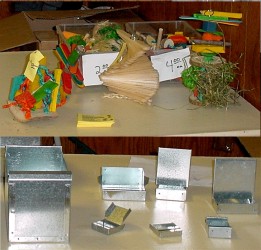
Chinchilla Supplies to Buy
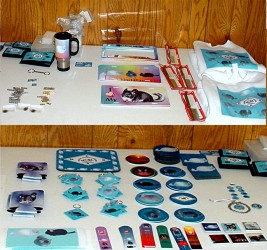
Chinchilla Gifts to Buy
In April of this year I had the privilege of going to a chinchilla show ... not just any show ... but the MCBA Nationals in Auburn, Indiana. Why would I consider it a privilege? It was a chance to see some of the 'best of the best' of the chinchillas, learn from some of 'the best' breeders, meet other breeders, purchase some fantastic chinchillas to add to my herd, be with friends (new and old) and thoroughly enjoy myself in a sea of chinchillas!
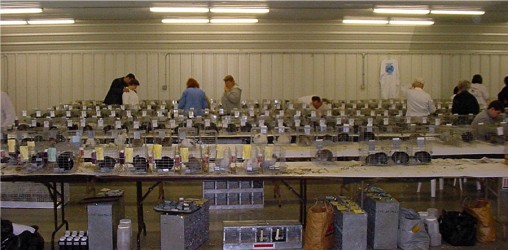
About 400 Chinchillas!
Many hours and many people worked very hard, for many months, behind the scenes to have the show go off like clock-work. From getting e-mailing and mailing addresses, sending out fliers, getting special prices for people making reservations at local hotels, ribbons, trophies, tables, lighting, paperwork, volunteers, judges, cooks, flowers, refreshments, preparation of packets for new members and many other duties for those directly or indirectly involved in the show.
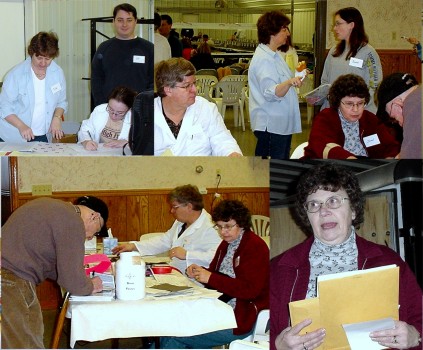
Sign-in/Registration
The day/night before the show, breeders bring their chins in and register each one. At the registration each chin receives a number that will identify him/her from any other chin in the show. Each is placed in a cage, fed, watered, locked up tight and allowed to rest the night before the 'big day'. Of course it's the breeders and those that made all the preparations that usually need the rest and relaxation, but that will not be had until after the show the next day, and for many, after the long trip home.
For those entering chinchillas, it's been months and often years of preparation. Breeding to have the best they can produce. Choosing a chin/chins they want to enter and preparing them for the show. Some entries are chosen by the breeder as early as 6 weeks of age, at which time they begin learning what grooming is all about. From the age of 7 to 10 months of age they are often shown in local and regional shows. About 4 weeks before each show, they get extra dust baths and extra grooming, in hopes of winning in one of the different levels of the show, but most of all, to be the grand champion of the show. All this leads to the Nationals where the best are shown and hope to win the honored title of 'Grand Champion". The day arrives and the final grooming before the judging begins!
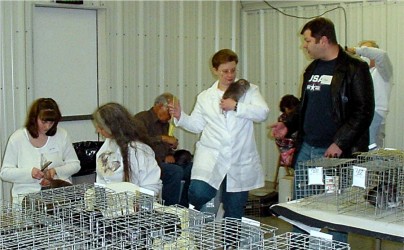
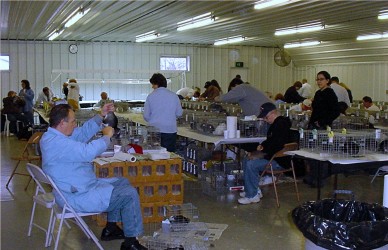
The chins just have to sit there, look pretty and show off all their good attributes. But, I think there were some there to cause mischief ... I caught a couple of chins showing their 'true' side ... (hehehe)
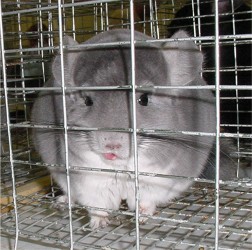
Here's a one sticking his toung out at the judges when they weren't looking, the little stinker!
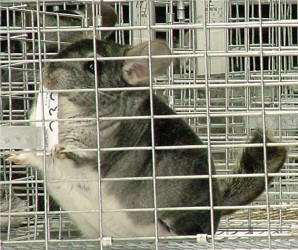
Another one realizes he just got caught tearing off the top of a competitor's number card and trying to chew it up.
Before the judging starts each color of chin has to be put in it's color group. With-in some colors, shades of the same color (light, medium and dark) need to be grouped.
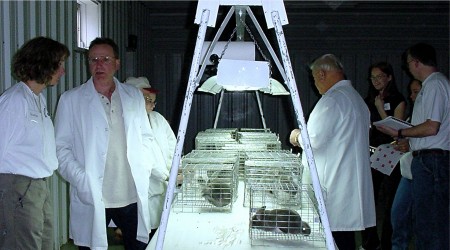
This is done by a group of people that are very familiar with the process.
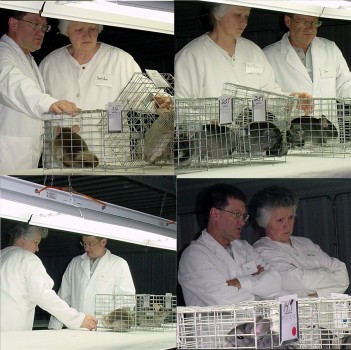
The judges of the chinchillas, Beth Ann Connell, Jim Ritterspach and Richard Ryerson take their judging seriously!
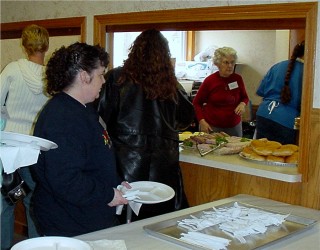
Time for a break and lunch!
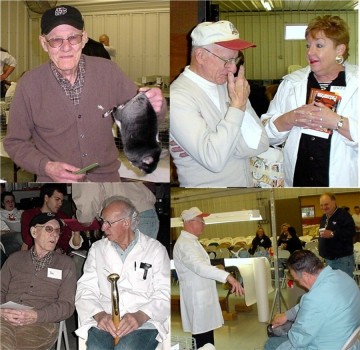
Time for old friends and new friends to share good memories and chinchilla knowledge.
After lunch, back to judging and getting the almost 400 entries down to the top 20, then to the top 10 chinchillas ... not an easy job! From these will be chosen the grand champion and the reserve champion.
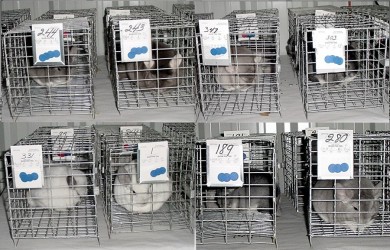
16 of the top 20

One of These Top 10 Will be the Grand Champion!
By now it has been a long day, but not quite the end of the day ... next is the award dinner, then gathering your chins and returning home or to the motel for a bit of a rest before the ride home tomorrow.
Tonight there is dinner with friends and associates that share the same love of chinchillas you do. A perfect ending to the day.
We're all looking forward to next year's show ... one that is probably already in the planning stages.
|
|